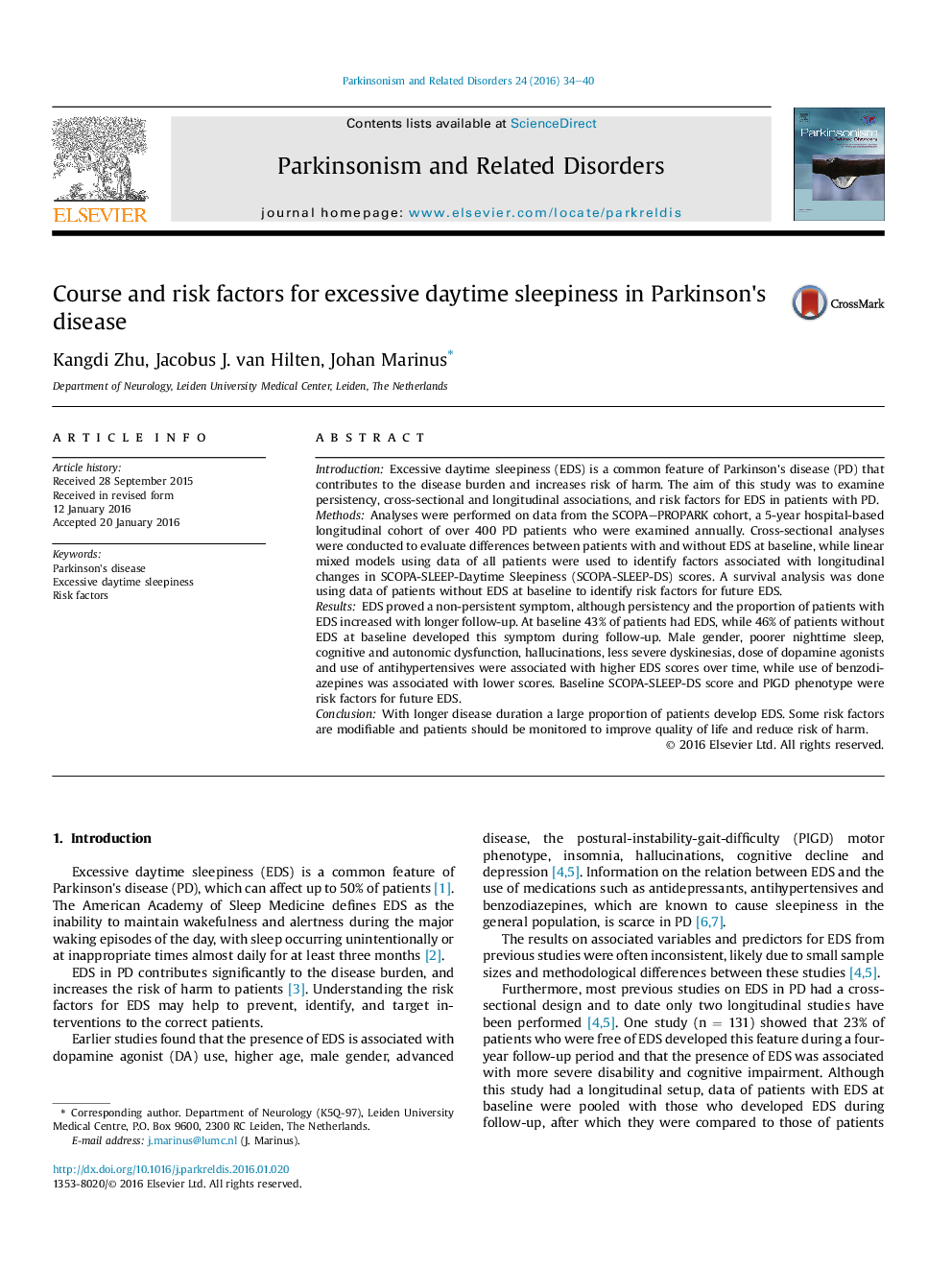| کد مقاله | کد نشریه | سال انتشار | مقاله انگلیسی | نسخه تمام متن |
|---|---|---|---|---|
| 1920396 | 1535825 | 2016 | 7 صفحه PDF | دانلود رایگان |
• EDS is a non-persistent symptom in patients with Parkinson's disease.
• With longer disease duration, a large proportion of PD patients develops EDS.
• A higher dopamine agonist dose is associated with higher EDS scores at follow-up.
• The use of antihypertensives is associated with higher EDS scores during follow-up.
• Patients with the PIGD phenotype are at increased risk of developing EDS.
IntroductionExcessive daytime sleepiness (EDS) is a common feature of Parkinson's disease (PD) that contributes to the disease burden and increases risk of harm. The aim of this study was to examine persistency, cross-sectional and longitudinal associations, and risk factors for EDS in patients with PD.MethodsAnalyses were performed on data from the SCOPA–PROPARK cohort, a 5-year hospital-based longitudinal cohort of over 400 PD patients who were examined annually. Cross-sectional analyses were conducted to evaluate differences between patients with and without EDS at baseline, while linear mixed models using data of all patients were used to identify factors associated with longitudinal changes in SCOPA-SLEEP-Daytime Sleepiness (SCOPA-SLEEP-DS) scores. A survival analysis was done using data of patients without EDS at baseline to identify risk factors for future EDS.ResultsEDS proved a non-persistent symptom, although persistency and the proportion of patients with EDS increased with longer follow-up. At baseline 43% of patients had EDS, while 46% of patients without EDS at baseline developed this symptom during follow-up. Male gender, poorer nighttime sleep, cognitive and autonomic dysfunction, hallucinations, less severe dyskinesias, dose of dopamine agonists and use of antihypertensives were associated with higher EDS scores over time, while use of benzodiazepines was associated with lower scores. Baseline SCOPA-SLEEP-DS score and PIGD phenotype were risk factors for future EDS.ConclusionWith longer disease duration a large proportion of patients develop EDS. Some risk factors are modifiable and patients should be monitored to improve quality of life and reduce risk of harm.
Journal: Parkinsonism & Related Disorders - Volume 24, March 2016, Pages 34–40
